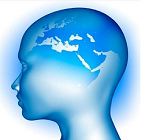Regional Maritime Security: Vietnam

Over the summer months Allmode IntelligenceSecurity Services will issue ‘Security Reports’ covering the regions of Southeast Asia. The purpose of these reports are to aid vessels and their crews with up to date information that will help them build better knowledge of an area and thus improve their situational awareness.
Situational Awareness (SA) is all about having the information you need to make effective decisions. There will always be occasions when people are required to make critical choices – sometimes at a fast pace – and the vast majority of errors that can occur are as a direct result of failure in situational awareness.
For the majority of vessels and crew visiting Southeast Asia, it will be a very familiar sight, however for some it may be their first time and often, as with many locations across the globe, looks can be deceiving and can lull people into a false sense of security. Intelligence is more than information and news gathering. It is the process by which information is collated, verified, analysed and used to respond effectively to time critical information. Current, historical and creditable intelligence not only tells you what the risks are but projects possible hot spots of criminal activity.
At Allmode we do not outsource intelligence but gain real time situational awareness and speed of reporting by continually developing our product, and getting the time critical information out to our teams and clients. These reports will look into areas such as crime, corruption and political issues within certain areas and offer advice on how to stay safe and in some cases advice on areas to avoid. It will also offer advice on any relevant health advisories to be aware of and travel information for those wishing to travel and tour certain areas or regions.
Below are exerpts from the Full Report.
Vietnam Overview
Vietnam is situated in the centre of the Southeast Asian region, in the eastern part of the Indochina peninsular bordering China to the north, Laos and Cambodia to the west and the east Sea and Pacific to the east and south. Its inland area is 331,688 square kilometres and its population amounts to about 89 million.
Vietnam lies in the tropical and temperate zone and has two seasons – the southwest monsoon from April to September and the northeast monsoon from October to late March or early April.
The two most destructive natural hazards in Vietnam are storms and floods. They occur over a large area as well as in the plains and the coastal zones, which are essential economic centres in Vietnam.
The coastal regions also experience tropical Cyclones. The season usually runs from May to November, but tropical Cyclones can occur outside this period. You should monitor the progress of approaching storms and follow the advice of the local authorities. According to the report released at the beginning of January 2014 by the National Committee on Criminal Control and Prevention, criminal activity in Vietnam rose in 2013 as a result of increases in cases relating to drugs, human trafficking and other ‘social evils’. The report showed 59,000 cases in 2013, increasing 5 per cent from the previous year. The report also pointed out the increase in crimes involving the use of weapons and explosive substances. Moreover, there were 18,000 recorded drugs cases, up 500 cases from the previous year. Authorities also tracked more than 500 human trafficking cases affecting around 1,000 victims. Vietnam is also a destination for illegal rhino horn trafficked from Africa by organised criminal poaching networks.
Three Major Ports in Vietnam Are:
Da Nang Port – located at the south end of a bay off the Pacific Ocean in east central Vietnam, about 622 kilometres north-northeast of Saigon Port in Ho Chi Min
City. It is the third largest commercial port in Vietnam, after the ports of Saigon and Haiphong. The Port consists of two main terminals: Tien Sa Seaport and Song Han
Terminal.
Tien Sa Seaport has a navigation depth of 11m and can receive 35,000 DWT ships and other kinds of vessels, such as container ships and large cruise
ships. The annual capacity for handling cargo through Tien Sa Seaport is about 3-4 million tonnes. The approach to Song Han Terminal is 12 nautical miles long with a
navigation depth of 6-7 m. The terminal has five berths along the shore.
Da Nang Port has an excellent harbour enclosed to the east by the Tien Sa Peninsula and Cape Da Nang. Da Nang Port is also an industrial city – the major products produced in Da Nang Port's factories are seafood, furniture, household goods and clothing.
Port of Saigon – a network of ports in Ho Chi Minh City. The Port is located along the Saigon river, 45 nautical miles from the sea, with the total area of 3,860,000 square kilometres. It includes four areas: Ham Nghi area: 4 km along the right bank of the Saigon river with 3 wharves for domestic vessels, Nha Rong area (old place) along Tau Hu river with 3 wharves for seagoing vessels, Khanh Hoi area 1.25 km in length with 11 wharves for seagoing vessels and fish-market area with 3 wharves and 2 berthing places.
Its facilities include quayside gantry crane (QC), rubber tyred/rail mounted gantry crane RTG/RMG, harbour mobile crane, crawler crane, rail mounted slewing crane, reach stacker /forklift/toplift, CFS forklift, tugboat, tractor, cargo truck and dozer/trimmer.
Haiphong Port – see section ‘Haiphong’
For more information read the full report here

Post your comment
You cannot post comments until you have logged in.
Login to post a commentComments
No one has commented on this page yet.
RSS feed for comments on this page | RSS feed for all comments